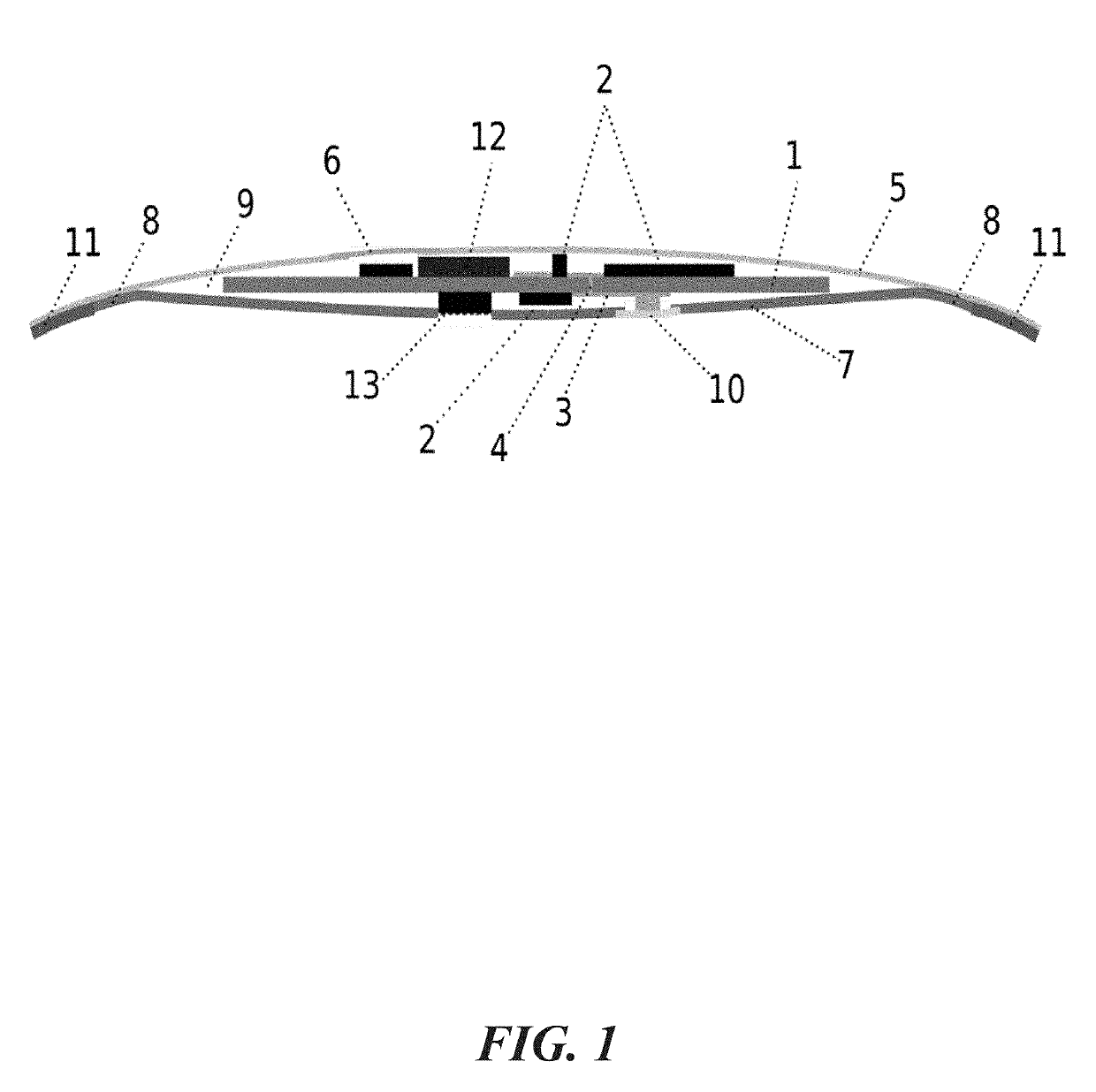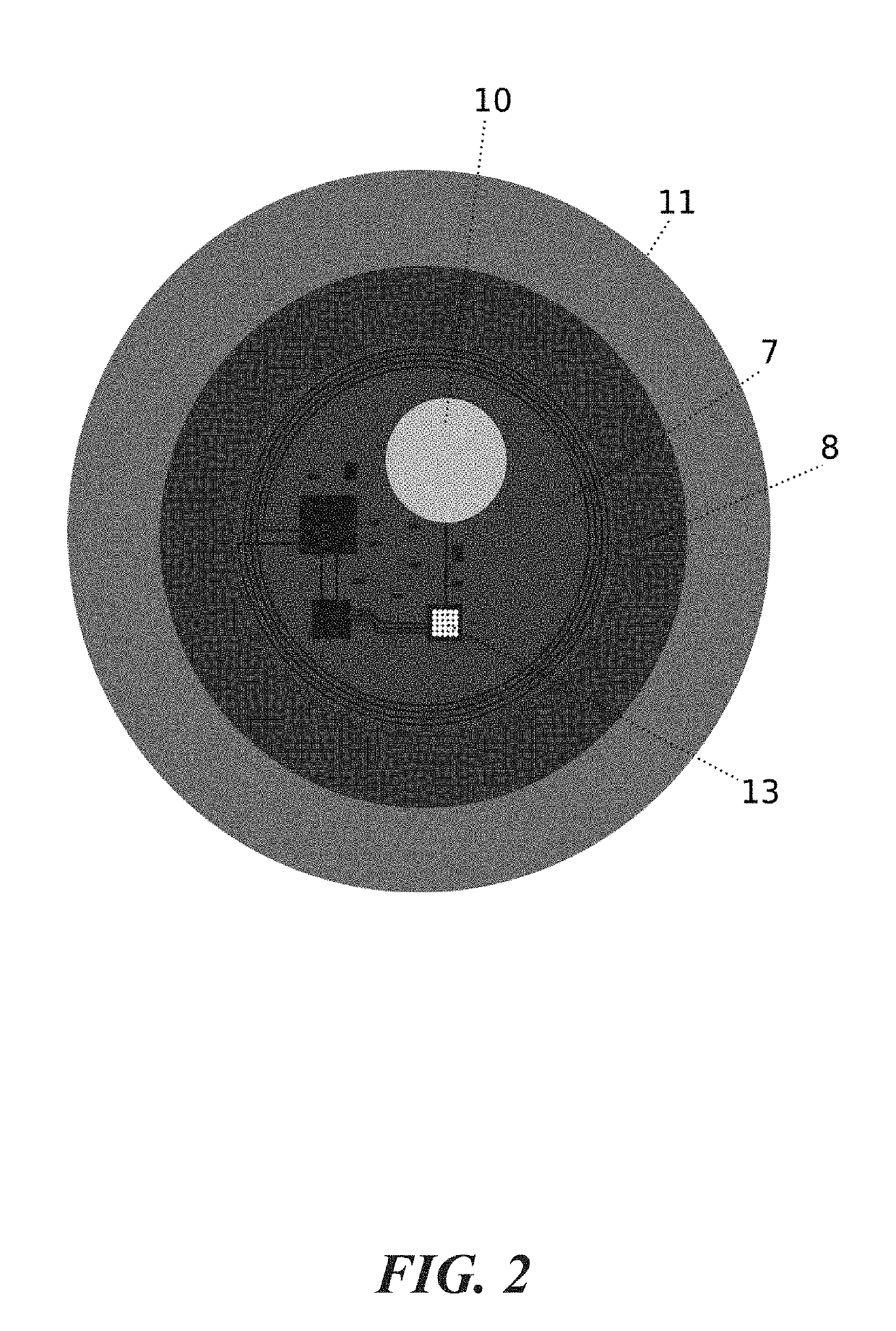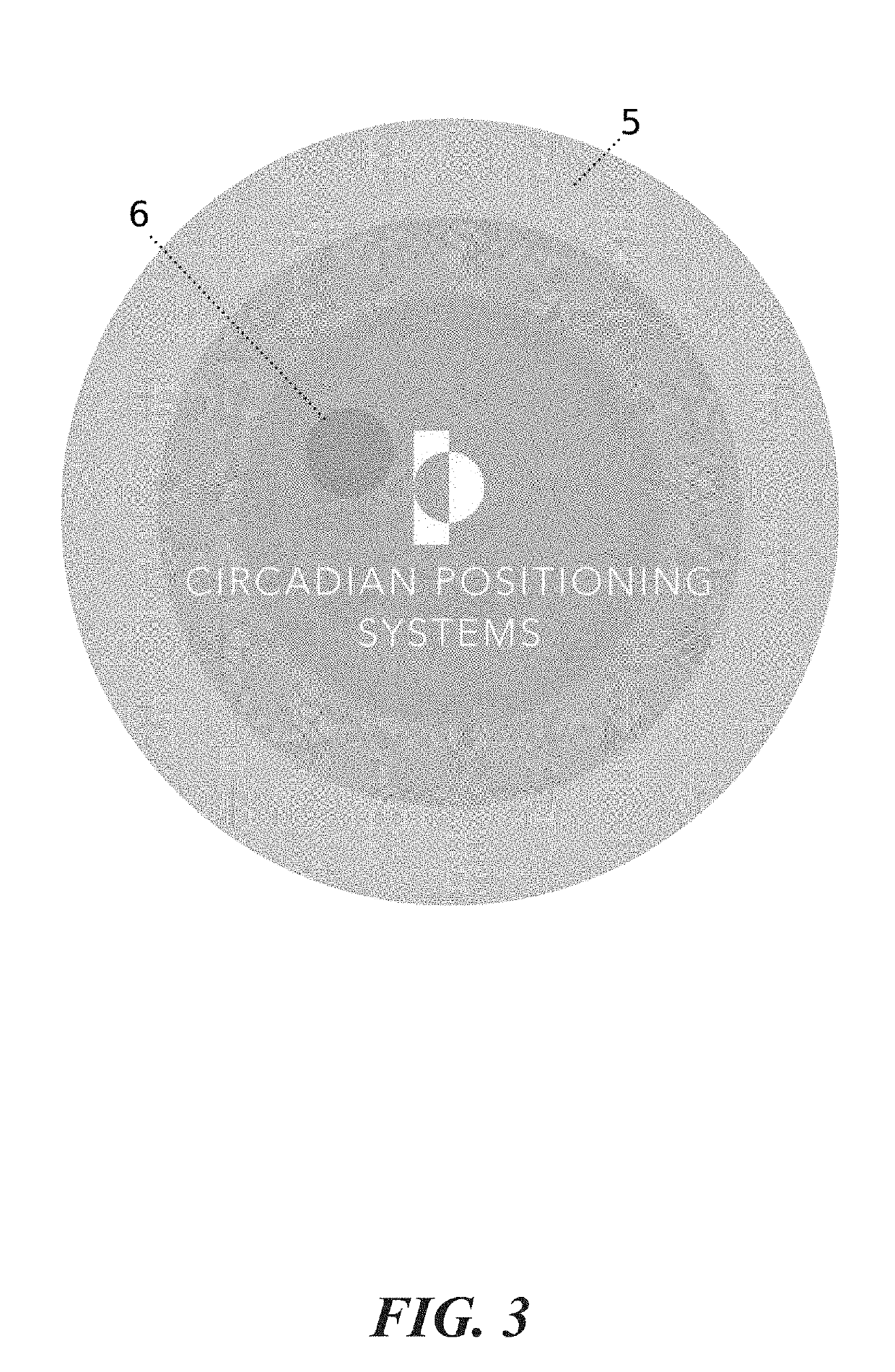Patch system for monitoring and enhancing sleep and circadian rhythm alignment
a patch system and sleep technology, applied in the field of patch system for monitoring and enhancing sleep and circadian rhythm alignment, can solve the problems of affecting the host of physiological and behavioral processes, affecting alertness, and affecting performance, so as to reduce variability in sleep patterns, improve sleep quality, and enhance sleep consolidation
- Summary
- Abstract
- Description
- Claims
- Application Information
AI Technical Summary
Benefits of technology
Problems solved by technology
Method used
Image
Examples
example 1
g Circadian Phase
[0105]The devices, patches, systems and methods disclosed herein modulate the circadian phase and / or sleep / wake of a subject in response to the subject's environment. Such devices, patches, systems and methods include or comprise a step of determining the subject's activity counts when the subject is awake or asleep. Based on the subject's pattern of sleep / wake the beginning and end of biological night would then be determined. This estimate of early biological night and late biological night allows for the administration of one or more interventions, for example by controlling or administering light, stimuli and / or agents, capable of shifting the subject's circadian system. For example, melatonin can be administered to a subject in the early biological night to advance the subject's circadian rhythms and very late biological night to delay the subject's circadian rhythms. Similarly, light can be used in the early biological night to delay phase and late biological ...
example 2
Forced Desynchrony Laboratory Results
[0106]Through significant experimentation, the inventors were able to successfully collect data during a 28-hours forced desynchrony laboratory study (FD). Activity / inactivity data across seven earth days are presented in FIG. 8. These data are from a healthy adolescent-aged participant. The graph on the top presents raw actigraphy data collected by a patch (“Actigpatch”) that shows activity level on the y-axis and earth day on the x-axis. A clear pattern of high activity (wake) and low activity (sleep) are seen across study days. The graphs in the middle of the figure show sleep / wake estimates based on the raw data in the top graph. Actigpatch sleep / wake estimates (left), Ambulatory Monitoring, Inc. (AMI) actigraphy sleep / wake estimates (right) and the comparison of Actigpatch to AMI estimates are displayed on the bottom graph. These figures confirm high reliability in sleep / wake estimates between Actigpatch and AMI devices.
example 3
[0107]Through significant experimentation, the inventors were able to successfully collect data during a one night in-laboratory study measuring polysomnography (PSG) and activity / inactivity using the Actigpatch. Data are from a healthy 32 year old male. Patch-based sleep / wake estimates across one night are presented in the graph on the top of FIG. 9. The graph in the middle of that figure shows polysomnographically (PSG) measured sleep / wake scored for the same subject and study according to Rechtschaffen and Kales (1968) criteria, and Actigpatch vs. PSG sleep / wake are compared in the graph at the bottom of FIG. 9. These data show reliability in sleep / wake estimates between Actigpatch and PSG (a “gold standard” by which sleep / wake patterns are measured).
PUM
 Login to View More
Login to View More Abstract
Description
Claims
Application Information
 Login to View More
Login to View More - R&D
- Intellectual Property
- Life Sciences
- Materials
- Tech Scout
- Unparalleled Data Quality
- Higher Quality Content
- 60% Fewer Hallucinations
Browse by: Latest US Patents, China's latest patents, Technical Efficacy Thesaurus, Application Domain, Technology Topic, Popular Technical Reports.
© 2025 PatSnap. All rights reserved.Legal|Privacy policy|Modern Slavery Act Transparency Statement|Sitemap|About US| Contact US: help@patsnap.com



